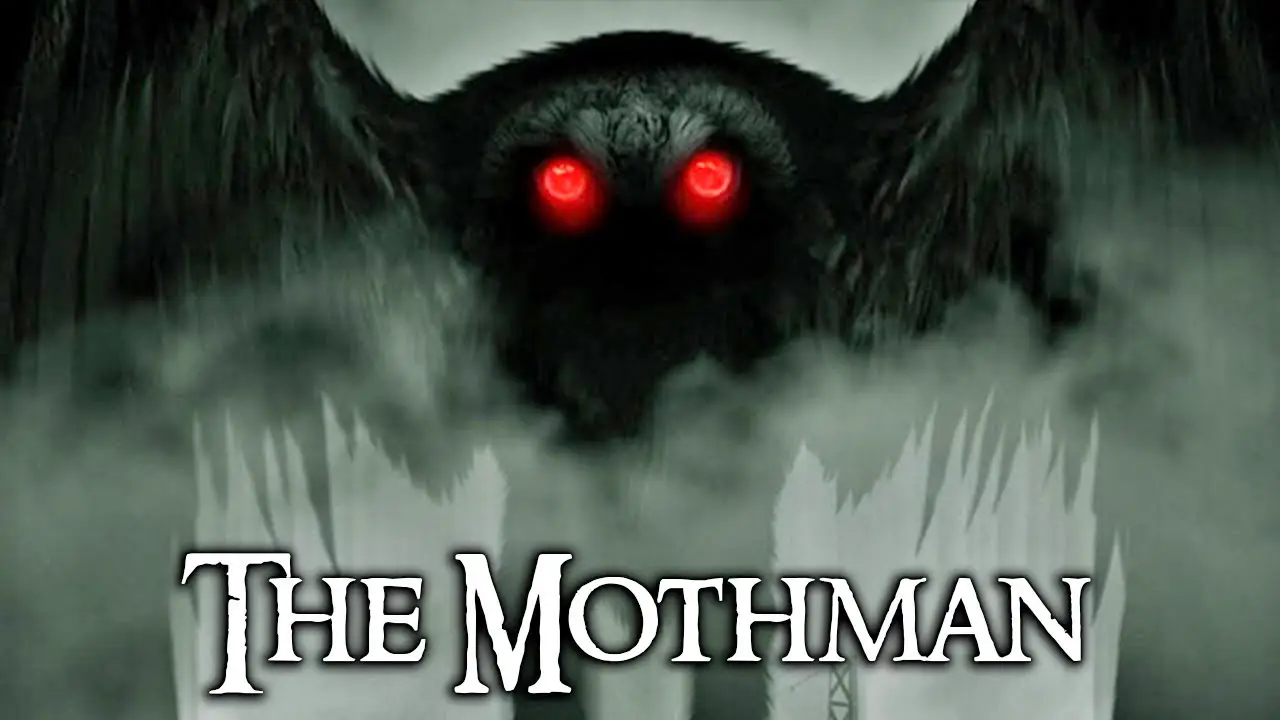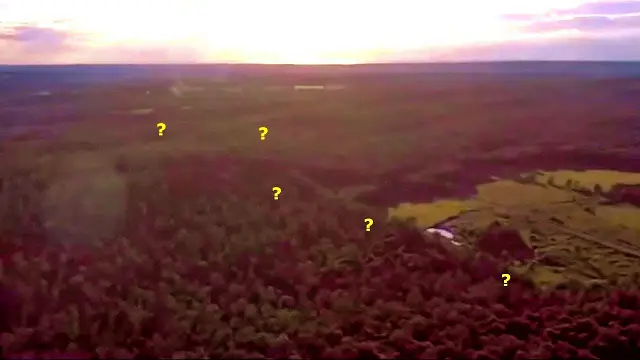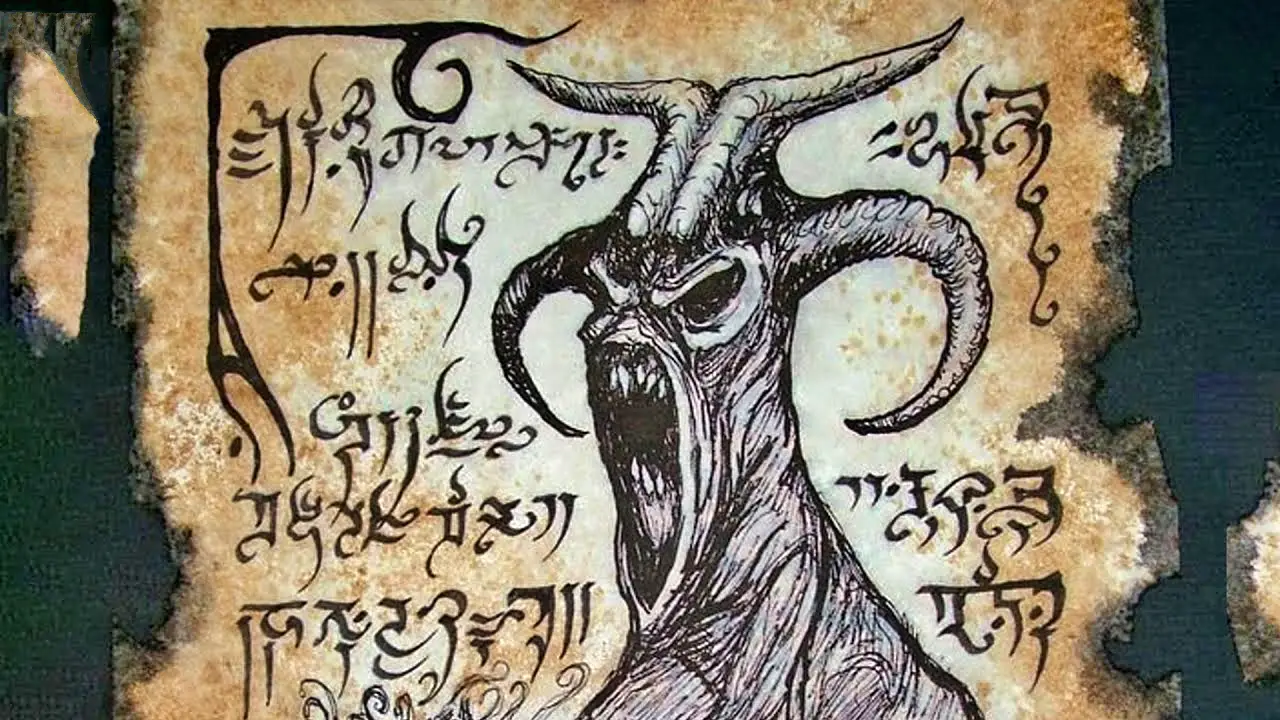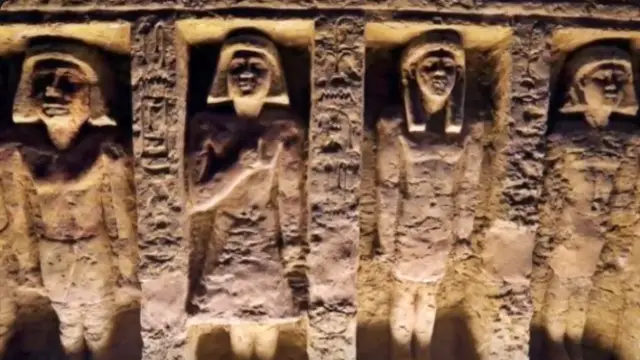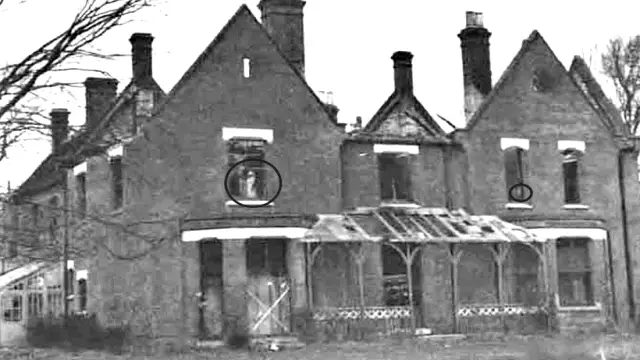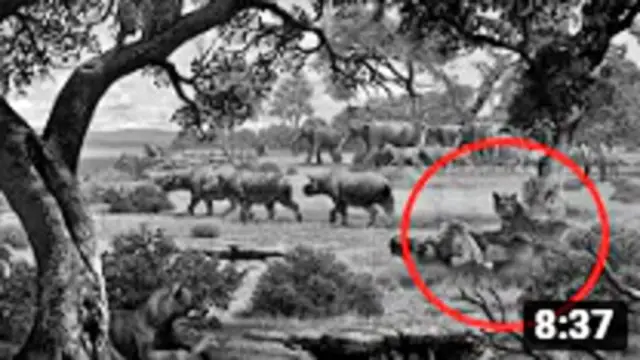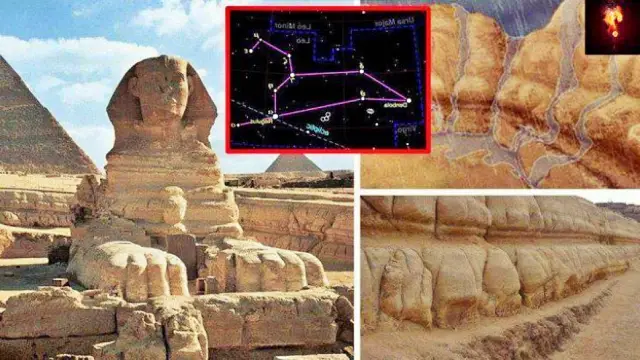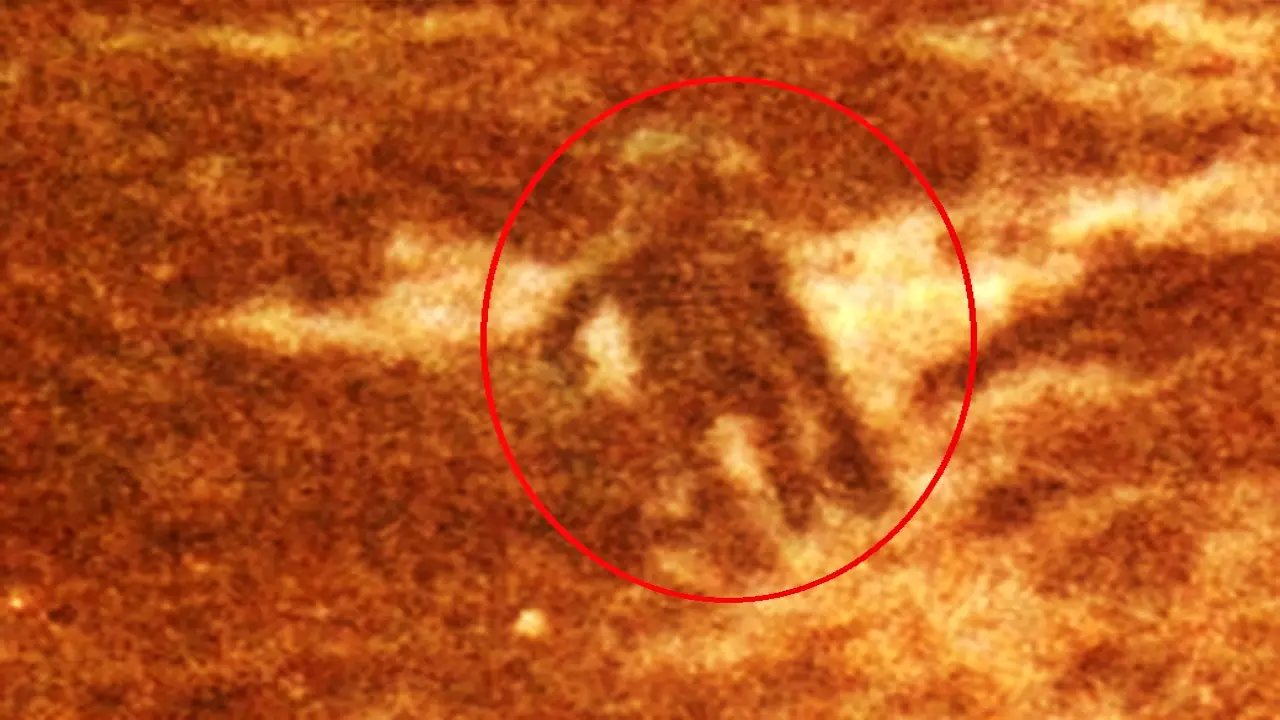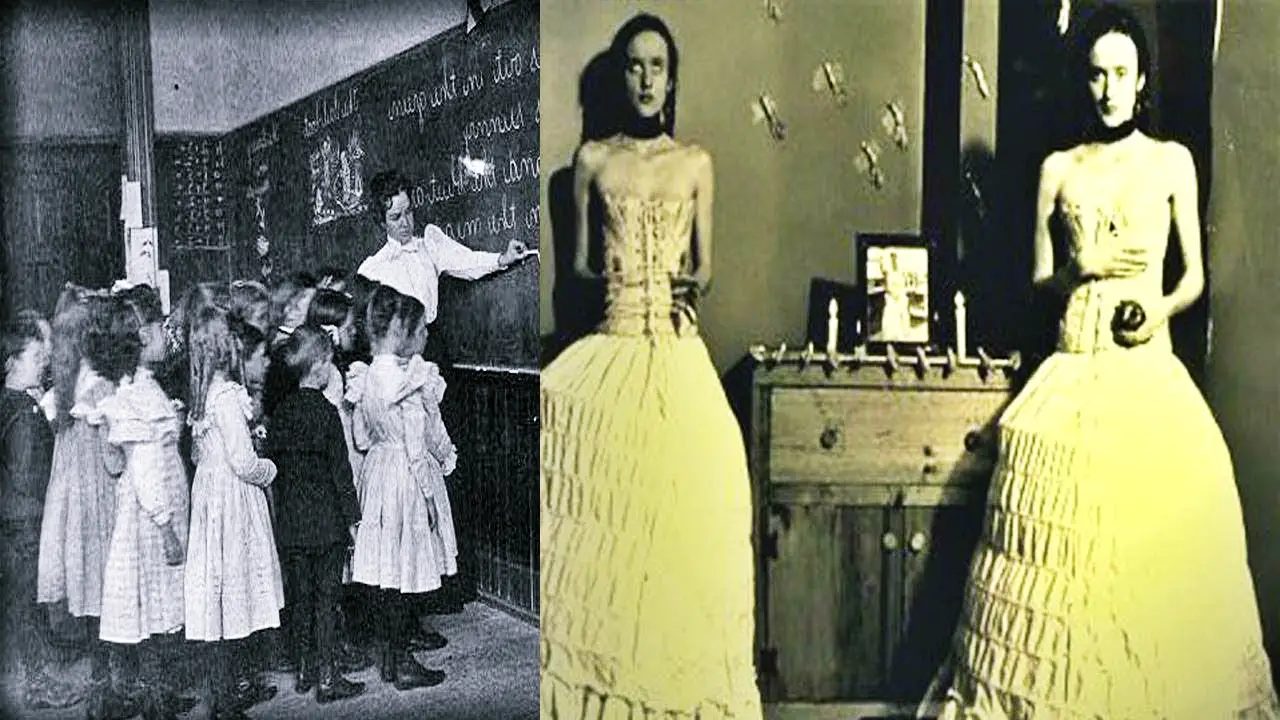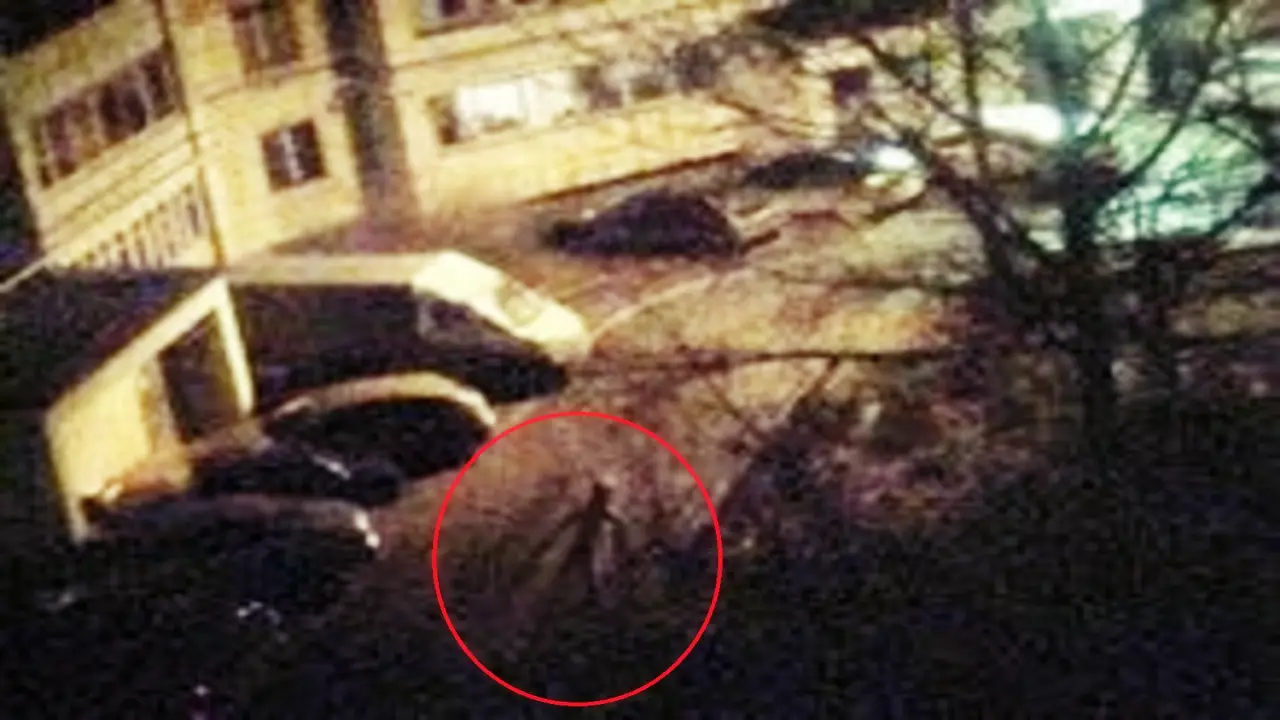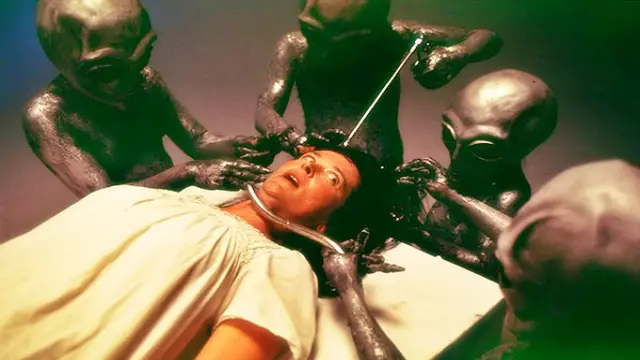PART 5/ PART 6/ PART 7/ PART 8/
PART 9
…
So much of the Western vision of Lucifer was inspired by the epic poetry of John Milton. His Paradise Lost was the Star Wars and the Lord of the Rings of its time, a widescreen, 3D apocalyptic blockbuster that pulled out all the stops and captured the imagination of readers all across Europe.
It took off on the idea of the war of the angels, hardly more than a few lines in the Book of Revelation, and created a saga that was meant to convey the very mind of God to the reader, to tell the story of Creation and the Fall, to open up the inner mind to imagery and drama not seen in the Western world for hundreds- if not thousands- of years.
But the epic was written during very dark days for the English poet, and indeed for England itself. Its motivation and inspiration was less religious ecstasy than death, desperation and paranoia. It may be why Satan- or Lucifer, as he’s come to be known in the popular imagination- is by far the most compelling character in the story.
Some have even called him its hero.
A bit of background here:
Milton scholar John Leonard notes, “John Milton was nearly sixty when he published Paradise Lost in 1667. [The writer] John Aubrey (1626–97) tells us that the poem was begun in about 1658 and finished in about 1663.
Leonard also notes that Milton “did not at first plan to write a biblical epic.”…Milton originally envisioned his epic to be based on a legendary Saxon or British king like the legend of King Arthur.
Having gone totally blind in 1652, Milton wrote Paradise Lost entirely through dictation with the help of amanuenses and friends. He also wrote the epic poem while he was often ill, suffering from gout, and despite the fact that he was suffering emotionally after the early death of his second wife, Katherine Woodcock, in 1658, and the death of their infant daughter (though Milton remarried soon after in 1663).
Not a happy time, by any measure.
But there’s a major plot point in Paradise Lost that tends to get overlooked and that is the association of pagan- and specifically Phoenician/Canaanite- gods with fallen angels. Remember now that the Book of Enoch was still lost as of Lost’s writing and we’re just now beginning to discover the connection of the Watchers to now-lost Phoenician deities (gods or demigods).
In Milton’s estimation the fallen angels, banned from Heaven and written out of the Book of Life, chose to descend to Earth and present themselves as gods to humankind. (Note: I’ve translated some of the archaic English here to clarify the text)
Godlike shapes and forms excelling human, princely dignities,
And powers that art in Heaven sat on thrones;
Though of their names in heavenly records now be no memorial Blotted out and erased By their rebellion from the Books of Life.
Got them new Names…wandering over the Earth…Of Mankind they corrupted to forsake …With gay religions full of pomp and gold,
And devils to adore for deities: Then were they known to men by various names,
And various idols through the heathen world.
Milton- who knew his mythology- spends a lot of time cataloging the ancient gods. First among these imposters are Baalim (Ba’al Hadad) and Ashtaroth, noting that the angels- apparently all male- could change genders at will:
…From Syrian ground, had general names of Baalim and Ashtaroth,
Those male, these feminine.
For spirits when they please can either sex assume, or both….
Milton echoes the ancient prophets and laments that the ancient Jews chose to follow these strange gods and because of this infidelity were defeated by their enemies (notably the Babylonians):
For those the race of Israel oft forsook their living strength,
And unfrequented left His righteous altar, bowing lowly down to bestial Gods;
For which their heads as low Bow’d down in battle, sunk before the spear of despicable foes.
The Astarte/Ishtar figure appears again, significantly worshipped by “Sidonian” virgins:
With these in troop came Astoreth, whom the Phoenicians call’d Astarte,
Queen of Heaven, with crescent Horns; To whose bright image nightly by the Moon Sidonian virgins paid their vows and songs,
Then comes the figure of Tammuz/Adonis, again inflaming the passions of Phoenician girls:
Tammuz came next behind, whose annual wound in Lebanon allured
The Syrian Damsels to lament his fate In amorous ditties all a Summers day,
While smooth Adonis from his native Rock ran purple to the Sea…The love-tale infected Sion’s daughters with like heat, Whose wanton passions in the sacred porch Ezekiel saw, when by the vision led
The Philistine god Dagon appears, who is often identified with Oannes:
Dagon his Name, Sea Monster, upward man and downward Fish: Yet had his temple high reared in Azotus, dreaded through the Coast
And then Milton goes and says it, those magic keywords so well-known to those of us familiar with fallen angel conspiracy theory:
A crew who under names of old renown…
For those of you unfamiliar with the reference, Milton is paraphrasing Genesis here, specifically a favorite quote among conspiracy theorists who identify aliens with the Nephilim:
There were giants in the earth in those days; and also after that, when the sons of God came in unto the daughters of men, and they bare children to them, the same became mighty men which were of old, men of renown. — Genesis 6:4
Cutting to the quick, Milton then names the Egyptian trinity as being particularly monstrous and offensive, as well as seductive to the faithful:
Osiris, Isis, Horus and their Train With monstrous shapes and sorceries abused fanatic Egypt and her Priests,
To seek their wandering Gods disguised in brutish forms rather then human.
Nor did Israel escape the infection when their borrowed gold composed the Calf in Horeb
Seeming to proceed out of order, Milton then names Belial, who drives his followers to disbelief.
BELIAL came last, than whom a Spirit more lewd fell not from Heaven, or more gross to love vice for it self: To him no temple stood or altar smoked; yet who more oft then he in temples and at altars, when the Priest turns atheist
“When the priest turns atheist.” Interesting.
The Greek gods are treated with less contempt than their Syro-Phoenician and Egyptian counterparts (Greco-Roman monsters like the Gorgons and the Furies et al appear later in the story). Their primary offense in Milton’s mind seems to be their multiplicity. But this may be significant in the context of this parade of fallen angels:
The Ionian Gods, of Javan’s issue held Gods,
Yet confessed later then Heaven and Earth their boasted Parents;
Titan Heaven’s first born, With his enormous brood, and birthright seized
Milton might have been especially creative and florid in his descriptions of these fallen angel-turned-pagan gods but he was not the first to demonize other people’s deities.
He was following in a long tradition dating back to the early Church Fathers, who remade the ancient Daemons (benevolent bringers of knowledge, essentially the same as our modern conception of angels) into evil “demons,” similar to the evil spirits of Babylonian folk magic:
In the second century, Christianity had moved deeper into the gentile world. They found it harder to condemn the Hellenic Gods (than) Moloch or Baal, who had always been obscure, esoteric, and associated with atrocities. The answer came to them in the form of pagan converts such as Justin Martyr and Tatian…Through their writing, they preached that the sins and adulteries ascribed to the gods by the Greeks were actually committed by demons…Like pagans, Christians still sensed and saw the gods and their power, and as something, they had to assume, lay behind it…they turned these pagan daimones into malevolent ‘demons’, the troupe of Satan…
But England had been Christian for a thousand years by the time Milton wrote Paradise Lost. The Puritans were a major force in English politics, having deposed a king and put one of their own (Oliver Cromwell) in his place as Lord Protector. So why were the old pagan gods such a concern to him, so much so that they became such a central tactic in Lucifer’s war against Heaven?
As it happens, the old gods had made something of a major comeback in Europe during Milton’s lifetime, and even before. A bit of history is in order:
In May 1638, Milton embarked upon a tour of France and Italy that lasted up to July or August 1639. His travels supplemented his study with new and direct experience of artistic and religious traditions, especially Roman Catholicism. He met famous theorists and intellectuals of the time, and was able to display his poetic skills.
While in Europe Milton would have bombarded with images of the old gods, from the Great Masters of the Renaissance as well as more contemporary works. Mythology had become a major source of inspiration for artists, so much so that handbooks were published explaining the symbolic and allegoric meaning of the gods and heroes.
The Iconologia of Cesare Ripa was published in 1593 and reissued with woodcuts in 1603. Ripa’s commentary, which was in Italian, separated the mythological figures from their narrative contexts, so that they often became abstractions with a moral meaning.
The other important iconography was the Imagines of Philostratus, a Greek work of the third century a.d. describing an art collection in Naples.
Painters in France and Italy in the seventeenth and eighteenth centuries used classical myths for narrative paintings on a heroic scale, for these were considered to belong to history painting, the most highly esteemed genre.
It wasn’t just artists who were looking back to the Greco-Roman world for inspiration. Scholars and philosophers had rediscovered the Neo-Platonists, the great rivals of the Gnostics. Foremost among these was Marsilio Ficino:
Ficino translated all of Plato’s dialogues into Latin and produced a number of commentaries, but his most important and systematic work was Platonic Theology , in which he outlines Neoplatonism and synthesizes it with other philosophical systems, in particular, Christianity.
Contrary to modern propaganda depicting a Taliban-like theocratic nightmare world across Europe, “pagan” philosophy had actually been in vogue since the High Middle Ages and even as early as the Carolingian Renaissance, as scholars and clerics looked to the classics to bolster the somewhat thin catalog of Christian learning.
But Ficino was willing to go far beyond his Medieval counterparts and skirt the frontiers of heresy:
There are noteworthy elements in his writings that are less traditional and orthodox by some contemporary philosophical standards. For example, he was deeply influenced by the Hermetic tradition, and describes a species of knowledge, or natural magic, that draws down the intellectual and moral virtues of the heavens to the terrestrial world.
Ficino also endorses an ancient theological tradition that included, to name a few, Hermes Trismegistus, Pythagoras, and Orpheus among its ranks. He held that this pagan tradition espoused a pious philosophy that in fact presaged and confirmed Christianity.
Ficino would presage the rise of Hermeticism, a revival of the wisdom (or supposed wisdom) of the fabled Hermes Trismegistus. Along with study of the Cabala, Hermeticism would mark a high-water point for mysticism in the West, as the finest minds of the day delved into this supposed ancient wisdom. Hermeticism would have tangible results, setting the groundwork for the Age of Science and the Age of Archaeology:
(Hermeticism) bore fruit in alchemy, in which transmutation of base metals into gold within a universelike crucible effected a parallel transmutation of the alchemist’s soul. Thus the name of Hermes became a banner for occult and mystical philosophies.
Hermeticism clearly encouraged the Renaissance interest in Egypt, which influenced speculations on language and linguistic philosophy, particularly in the seventeenth century, when the Jesuit Athanasius Kircher (1601–1680) published voluminous works on hieroglyphs.
Milton himself would be influenced by Hermeticism when he was a younger man, making explicit reference to the fashions of the day in his poem, Il Penseroso:
With thrice great Hermes, or unsphere
The Spirit of Plato, to unfold
What worlds or what vast regions hold
The immortal mind that hath forsook
Her mansion in this fleshly nook
And of those daemons that are found
In fire, air, flood, or under ground
Milton would delve into more liberal religious and political ideas as well, perhaps influenced by his experiences in Europe, taking stands on controversial issues like censorship and divorce. He’d also express some relatively unconventional theological opinions in the context of Protestant Christianity.
But soon everything would change for the poet, and change for the worse. From the Cliff Notes biography of Milton:
In 1642, the Civil War began, and its effects touched Milton directly. That same year, he married Mary Powell, daughter of a Royalist family from Oxford. A month after the marriage, Mary (returned) to live with her family…Milton’s brother, Christopher, also announced as a Royalist…
The year 1649 marked a decisive change in Milton’s life.
Charles I was executed, with Milton probably in attendance. The murder of a king was shocking to the people of a country that had always lived under a monarchy and for whom the king had an aura of divinity.
During 1652, Milton suffered a number of traumatic events.
First, his eyesight, which had been growing weaker, gave out completely…By 1652, Milton was totally blind.
Second, his young son, John, died under mysterious circumstances. Third, his wife died from complications in giving birth to the Milton’s third daughter…
In 1656, he married Katherine Woodcock, who died two years later. He would marry for the third time in 1663 to Elizabeth Minshull, who became his nurse as his health declined…
With the death of Oliver Cromwell in 1658, Milton’s political fortunes were reversed. As Royalists gained power, Milton went into hiding…
Milton stayed in hiding until Parliament passed the Acts of Oblivion, pardoning most of those who had opposed Charles II. Even so, Parliament considered arresting Milton, an act which was carried out in October 1659…Milton was released in December.
By the time of the actual restoration of the monarchy in 1660, Milton was hard at work on Paradise Lost.
Many scholars see the War in Heaven as a metaphor for the English Civil War, but what then do we make of Lucifer/Satan?
He’s by far the most interesting and complex character in the epic. A dynamic personality and a great orator, Lucifer/Satan is alternately proud, defiant and courageous yet has been cited for a tendency to over-intellectualize, a kind of pettiness, and a penchant for self-doubt. Hmm, interesting. Sounds like a real person.
At the same time Lucifer leads this innumerable army of demons, many of whom who had posed as pagan gods in a war on Heaven- on the cosmic order- itself. He leads mankind into the Fall in his struggle, a struggle he ultimately loses (did I mention he sires a Reptilian?).
Yet he remains the most compelling figure in the saga. A saga in which he wasn’t originally supposed to appear in at all.
Was Lucifer/Satan a simple literary invention or had Milton based it on a real person?
Was Milton making a statement with Lucifer/Satan, was he telling a story of Europe’s lost innocence, how it had been led astray by charismatic rebels who declared war on the established order and now men like Milton were left to pay the price for their impiety?
Because there was a charismatic rebel who lived a few decades before the creation of Paradise Lost, a rebel who not only declared war on the cosmic order itself but also sought to return the actual worship of the old gods to Europe. Oh, I’m sure some of you have figured this one out by now:
Giordano Bruno, original name Filippo Bruno, byname Il Nolano (born 1548, Nola, near Naples—died February 17, 1600, Rome) Italian philosopher, astronomer, mathematician, and occultist whose theories anticipated modern science.
Bruno is, perhaps, chiefly remembered for the tragic death he suffered at the stake because of the tenacity with which he maintained his unorthodox ideas at a time when both the Roman Catholic and the Reformed churches were reaffirming rigid Aristotelian and Scholastic principles in their struggle for the evangelization of Europe.
Bruno was one of the first scholars to imagine outer space in the same general terms we see it today, and believed Earth was just one of many planets:
In his 1584 book On the Infinite Universe and Worlds, Bruno theorized that there is a single general space, a single vast immensity which we may freely call Void; in it are innumerable globes like this one on which we live and grow. This space we declare to be infinite… In it are an infinity of worlds of the same kind as our own.
Bruno’s concept of an infinite universe and uncountable worlds and suns was almost inconceivable to thinkers of his day. And Bruno wasn’t shy about marching straight into the minefields of heresy to make his points:
“I can imagine an infinite number of worlds like the earth, with a Garden of Eden on each one. In all these Gardens of Eden, half the Adams and Eves will not eat the fruit of knowledge, but half will. But half of infinity is infinity, so an infinite number of worlds will fall from grace and there will be an infinite number of crucifixions. Therefore, either there is one unique Jesus who goes from one world to another, or there are an infinite number of Jesuses.
One can’t help but think of Satan’s uncountable legions of fallen angels when reading Bruno’s theories, particularly when they deny the uniqueness of Christ, a claim even an unconventional Christian like Milton would find blasphemous, since technically-speaking, Bruno is sneaking polytheism in the back door there. Read this then:
Witness this new-made world, another Heaven
From Heaven-gate not far, founded in view
On the clear hyaline, the glassy sea;
Of amplitude almost immense, with stars
Numerous, and every star perhaps a world
Of destined habitation; but thou knowest
Their seasons: among these the seat of Men,
Earth, with her nether ocean circumfused,
Their pleasant dwelling-place. Thrice happy Men,
And sons of Men, whom God hath thus advanced!
It’s apparent that Milton was indeed familiar with Bruno’s ideas. But simultaneously, you also get a sense that the chaos of Bruno’s infinite worlds in the legions of demons storming Heaven. It’s as if Milton is comfortable with the idea of infinite worlds but only if the Divine Order is firmly established:
(Lucifer) spake: and to confirm his words, out-flew millions of flaming swords, Drawn from the thighs of mighty Cherubim; the sudden blaze far round illumined hell: highly they raged against the Highest, and fierce with grasped arms clashed on their sounding shields the din of war, Hurling defiance toward the vault of Heaven.
Bruno would hailed as a martyr for the cause of throughout the Enlightenment and into the Scientific Revolution of the 19th Century. It wasn’t until a Renaissance historian named Frances Yates took a more serious look at Bruno’s writings and history that a different picture emerged:
Bruno was an intense religious Hermetist, a believer in the magical religion of the Egyptians as described in the Asclepius, the imminent return of which he prophesied in England, taking the Copernican sun as a portent in the sky of this imminent return. He patronises Copernicus for having understood his theory only as a mathematician, whereas he (Bruno) has seen its more profound religious and magical meanings.
“Giordano Bruno’s Egyptianism was demonic and revolutionary, demanding full restoration of the Egyptian-Hermetic religion.”
Up until Yates’ book, Bruno had historically been seen as a figure sympathetic to the new early modern science due to his adherence to Copernicus’s theory of heliocentricity. His execution at the stake in 1600 by the inquisition was regarded as a martyrdom for the new science. Yates argues that Bruno’s outlook had nothing to do with science and was based entirely on his convictions about Magia and Cabala.
The Catholic Encyclopedia was unapologetic about Bruno’s martyrdom, baldly stating:
Bruno was not condemned for his defense of the Copernican system of astronomy, nor for his doctrine of the plurality of inhabited worlds, but for his theological errors, among which were the following: that Christ was not God but merely an unusually skilful magician, that the Holy Ghost is the soul of the world, that the Devil will be saved.
“That the Devil will be saved.” A clearer picture begins to emerge.
Milton not only knew of Bruno but may have had a deeper perspective on the man than later historians like Yates could hope to have.
It seems Milton’s father and Bruno were acquainted, leading one to believe that Milton may have had an inside track on the rebel :
Giordano Bruno spent the years between 1583 and 1585 in England, lecturing at Oxford and London and coming into close contact with Fulke Greville, Philip Sidney, and the entire Sidney circle… The controversial nature of Bruno’s impact on people belonging to the academic and literary circles ensured the survival of interest in Bruno’s thought well into the seventeenth century.
Milton’s father, John Milton senior, and his headmaster at St. Paul’s, the elder Alexander Gil, were at Oxford at the time when Bruno gave his lectures on heliocentricity, which were received with both great interest and hostility.
Their acquaintance with Bruno may have inspired Milton’s early interest in the Italian scientist and philosopher. Such interest would imply an acquaintance with the different strands of Bruno’s philosophy hermeticism, cabalism, and cosmology.
There may have been additional channels of information for the poet as well:
Additionally, Milton’s Italian journey, as (Milton biographer) Christopher Hill suggests, would have encouraged greater familiarity with Bruno…
Reading of Bruno and his temperament it’s hard not to see him in Milton’s Lucifer/Satan, particularly when you consider the darkened mood and hard times the poet was working under.
Age and misfortune seem to have dampened Milton’s appetite for apostasy and rebellion. Heretical ideas he may have entertained in his more carefree youth may have seemed more like banes as Fortune herself turned against him. Milton may have been an eccentric Christian but was a Christian all the same.
It should also be noted that Paradise Lost was published in 1667, after the Great Fire of London in 1666 and the London Plague of 1665-1666. Apocalyptic times.
So Bruno’s “war against Heaven,” his heretical ideas about the Devil, his desire to see the old gods restored to worship in Europe and his ultimate downfall all paint a compelling portrait of the role model for Milton’s Lucifer/Satan.
A portrait that would have its own kind of prophetic power.
Bruno’s alien seeds would take root and many of his ideas would lead to accepted science. The Rosicrucians would arise in Milton’s lifetime and the Freemasons around the time of his death (the Masons would build that famous statue of Bruno glaring at the Vatican).
Bruno’s mania for Egyptology would spread like a contagion and lead to expeditions beginning in the 18th Century, which would change history forever. The power of the his nemesis the Church would weaken as the Protestant Reformation and the Enlightenment took hold.
Scientific inquiry and technology would gather strength in the years after Paradise Lost, leading to The Origin of Species and the “dark Satanic mills” of the Industrial Revolution.
But alongside the gathering power of science would be the Neo-Classical revival, in which images of the old gods would be seen on everything from monumental architecture to household wares to soda bottles.
Spiritual ideas from the East would take root in Theosophy and the occult revival, in which the old gods would be openly worshipped and the ancient Mysteries would be revived.
Somehow, some way, the return of the old gods and technological and scientific progress have always gone hand in hand.
From the late Classical Era to the High Middle Ages and the Renaissance and throughout the Industrial Revolution, into the age of radio and mass media (the Golden Age of Hollywood was filled with Freemasons and occultists) the rediscovery of the old gods always seemed to walk hand-in-hand with technological and scientific breakthrough, as if Semjaza and Prometheus still whispered in our ears.
The two World Wars were fought by powers all drawing on the same Greco-Roman symbology- and indeed, the same ancient occult rites- as part of their arsenal.
And as soon as they were over, everything would change in ways no one could have ever imagined.
My immense gratitude to Gordon White for lending a sympathetic ear while I struggled to wrestle all of the threads in this piece to the ground. His insights and encyclopedic grasp of all things Hermetic were absolutely crucial in sorting this whole story out.













